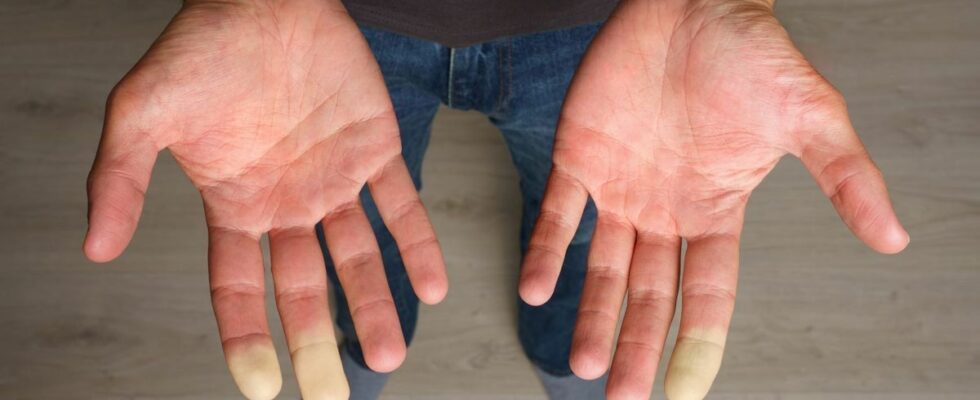Published on
updated on
Reading 2 min.
in collaboration with
Dr Gérald Kierzek (Medical Director)
Do you constantly have cold hands? If you notice other symptoms in addition to this, such as discoloration of your fingers, you may have Raynaud’s syndrome. To find out, answer the questions in this test!
Raynaud’s disease is a disorder that affects blood circulation, causing temporary narrowing of the arteries in response to certain triggers, including cold. This constriction of blood flow makes the extremities painful, cold and sometimes change color.
Raynaud’s syndrome affects the fingers, but not only
To make a diagnosis, the doctor relies on the patient’s questioning, but also his clinical examination. He thus determines what type of Raynaud’s disease his patient has:
- The primitive formwhich is also called idiopathic;
- The secondary formlinked to another disease, in particular an autoimmune disease.
In case of exposure to cold – but also to humidity or stress, a strong emotion in some people – the disease causes damage to the extremities, most often the fingers, which change color. The nose, toes, tongue, nipples and ears may also be affected.
Are you affected by Raynaud’s syndrome?
If you notice these symptoms, answer these 5 questions yes or no.
- Are your fingers sensitive to cold?
- Do your fingers change color (becoming white, blue, red or purple), in response to a change in temperature or stressful situations?
- Do you feel numbness or pain in the affected area when they change color?
- Do you feel tingling when the affected area warms up?
- Have you ever developed sores or ulcers on your fingers or toes?
If you answer yes to at least two questions, it may be worth talking to your doctor.
According to Dr. Gérald Kierzek, emergency physician and medical director of Doctissimo, if you know that you suffer from this syndrome and you have new symptoms, “Better to consult your doctor“. Otherwise, for prevention, you can:
- Avoid exposure to cold and sudden changes in temperature. This goes through:
- Protect your extremities (hands, feet) when going out in the cold;
- Wear warm, layered clothing, gloves, thick socks;
- Use heaters or heated gloves if necessary;
- Stop smoking because tobacco aggravates vasoconstriction and increases the risk of finger ulcerations by 3;
- Limit caffeine and alcohol consumption which can make symptoms worse;
- Avoid microtrauma repeated in:
- Adapting the workstation if you use vibrating tools for example;
- Avoiding prolonged compression of the hands and wrists;
- Managing stress : this involves practicing relaxation techniques because stress can trigger crises;
- Maintain good blood circulation in:
- Doing hand warming exercises regularly;
- Frequently moving fingers and toes.
